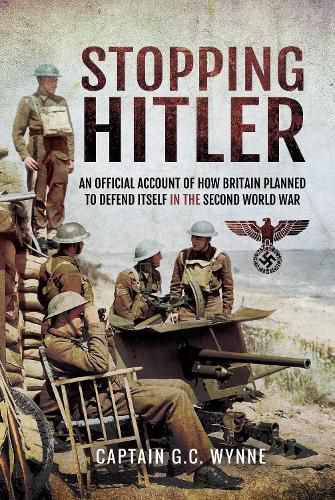Readings Newsletter
Become a Readings Member to make your shopping experience even easier.
Sign in or sign up for free!
You’re not far away from qualifying for FREE standard shipping within Australia
You’ve qualified for FREE standard shipping within Australia
The cart is loading…






After the unprecedented death and devastation of the First World War, few people imagined that such a conflict could ever happen again. Though the belief that it had been the ‘war to end war’ was to be shattered within a generation, in the immediate aftermath of the First World War it was expected that international disputes could be settled by arbitration through the creation of League of Nations. Consequently, the British Government concluded that there would not be another war in the foreseeable future and therefore the country’s armed forces could be correspondingly scaled back. The rise of Nazism in Germany in the 1930s, however, prompted politicians and military leaders to contemplate the frightening prospect of another global conflict. The Chiefs of Staff of the three Services were instructed to bring Britain’s armed forces up to a standard where they could resist a revitalized and powerful aggressor, and to put in place plans for the defence of the country. When that war became a reality, the Chiefs of Staff then had to devise schemes to prevent a German invasion and, as the war progressed, to counter the bombers of the Luftwaffe and the flying bombs and rockets that followed. Reproduced here in its entirety is an official account drawn up by Captain G.C. Wynne of the Historical Section, Cabinet Office in 1948. Arranged in four parts, corresponding to the four different threats which developed with the changing situations of the war, it details the various plans made for Home Defence between 1939 and 1945. AUTHOR: Captain Graeme Chamley Wynne was born in 1889. He was commissioned into the King’s Own Yorkshire Light Infantry in 1907. Climbing through the ranks, he was serving in the 2nd Battalion at the outbreak of war in 1914. As part of the British Expeditionary Force he was captured by the Germans at Le Cateau on 26 August 1914. Wynne was employed by the Historical Section, Committee of Imperial Defence (later the Historical Section, Cabinet Office) between 1918 and 1956. It was in this role that he completed the report published in this book on 19 May 1948.
16 illustrations
$9.00 standard shipping within Australia
FREE standard shipping within Australia for orders over $100.00
Express & International shipping calculated at checkout
After the unprecedented death and devastation of the First World War, few people imagined that such a conflict could ever happen again. Though the belief that it had been the ‘war to end war’ was to be shattered within a generation, in the immediate aftermath of the First World War it was expected that international disputes could be settled by arbitration through the creation of League of Nations. Consequently, the British Government concluded that there would not be another war in the foreseeable future and therefore the country’s armed forces could be correspondingly scaled back. The rise of Nazism in Germany in the 1930s, however, prompted politicians and military leaders to contemplate the frightening prospect of another global conflict. The Chiefs of Staff of the three Services were instructed to bring Britain’s armed forces up to a standard where they could resist a revitalized and powerful aggressor, and to put in place plans for the defence of the country. When that war became a reality, the Chiefs of Staff then had to devise schemes to prevent a German invasion and, as the war progressed, to counter the bombers of the Luftwaffe and the flying bombs and rockets that followed. Reproduced here in its entirety is an official account drawn up by Captain G.C. Wynne of the Historical Section, Cabinet Office in 1948. Arranged in four parts, corresponding to the four different threats which developed with the changing situations of the war, it details the various plans made for Home Defence between 1939 and 1945. AUTHOR: Captain Graeme Chamley Wynne was born in 1889. He was commissioned into the King’s Own Yorkshire Light Infantry in 1907. Climbing through the ranks, he was serving in the 2nd Battalion at the outbreak of war in 1914. As part of the British Expeditionary Force he was captured by the Germans at Le Cateau on 26 August 1914. Wynne was employed by the Historical Section, Committee of Imperial Defence (later the Historical Section, Cabinet Office) between 1918 and 1956. It was in this role that he completed the report published in this book on 19 May 1948.
16 illustrations